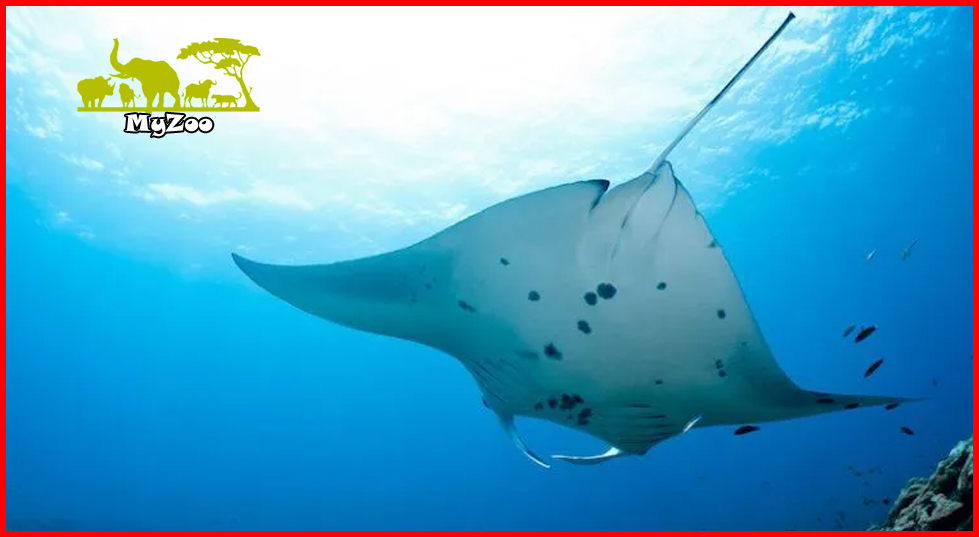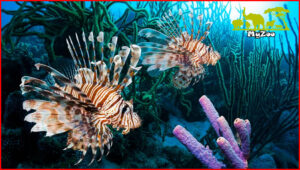
What is cloak of the manta ray
Manta rays are one of the most fascinating creatures in the ocean. They are large, graceful, and vital to marine ecosystems. These gentle giants help maintain the balance of the ocean by controlling plankton populations. The “Cloak of the Manta Ray” is a magical item in fantasy games and literature. It is inspired by the manta ray’s ability to glide smoothly through water. This item allows the wearer to swim effortlessly and breathe underwater. It is a valuable tool for adventurers exploring deep seas and hidden underwater worlds.
Many fantasy role-playing games include the Cloak of the Manta Ray. It provides players with enhanced mobility and underwater survival skills. In some stories, it is linked to ancient marine civilizations and legendary sea creatures.
This magical cloak is highly sought after for its unique abilities. It offers protection, freedom of movement, and a sense of mystery. The idea behind it comes from real-life manta rays, which are known for their smooth, flowing motions.
In this article, we will explore the origins, uses, and significance of the Cloak of the Manta Ray. We will also discuss how it is portrayed in different games and stories. Whether you are a gamer, fantasy lover, or curious about marine life, this guide will give you a clear understanding of this fascinating item.
Understanding the Cloak of the Manta Ray
The Cloak of the Manta Ray is a magical item found in fantasy games and stories. It grants the wearer the ability to swim smoothly and breathe underwater. This makes it a valuable tool for underwater exploration and survival. Inspired by the real-life manta ray, the cloak allows for swift and effortless movement in water.
Physical Characteristics
The Cloak of the Manta Ray resembles a long, flowing cape made of dark, smooth material. It often has a shape similar to a manta ray’s body, with extended sides that resemble fins. Some versions have a shimmering, scale-like texture that reflects light like water.
When worn, the cloak wraps around the user’s body like a second skin. It transforms into a sleek, hydrodynamic form when submerged. This reduces water resistance, allowing the wearer to glide effortlessly. Some cloaks even have magical runes or symbols that glow faintly underwater.
In many fantasy settings, the cloak is made from enchanted fabrics or the hide of a mystical sea creature. Its design ensures both functionality and a mysterious, oceanic aesthetic. The Cloak of the Manta Ray is a prized possession for adventurers who explore the depths of the sea.
The Function of the Cloak
Manta rays do not have an actual “cloak,” but their body structure acts like one. Their large, wing-like fins help them glide smoothly through the water. This unique design allows them to move with minimal effort, conserving energy as they search for food.
Role in Manta Ray Survival
The manta ray’s body shape plays a vital role in its survival. Its broad, flat fins help it navigate strong ocean currents with ease. This efficient movement allows manta rays to travel long distances while using very little energy. Their dark-colored backs also help them blend with the deep ocean, protecting them from predators.
How It Helps in Their Natural Habitat
Manta rays live in tropical and subtropical waters. Their streamlined bodies and flexible fins help them stay agile while feeding on plankton. They use their large, forward-facing cephalic fins to direct food into their mouths.
The smooth, flexible “cloak” of their bodies also helps them escape predators. By making quick turns and dives, they can avoid sharks and other threats. This natural adaptation allows them to thrive in the open ocean, where speed and efficiency are essential for survival.
The Cloak’s Unique Features
The Cloak of the Manta Ray is special because of its smooth, flowing design. It allows for effortless movement in water, just like a real manta ray. When worn, the cloak wraps around the user’s body, reducing water resistance. This makes swimming faster and easier. The cloak also grants the ability to breathe underwater, which is essential for deep-sea exploration.
Another unique feature is its adaptability. When out of water, it looks like an ordinary dark cape. But when submerged, it expands and changes shape, mimicking a manta ray’s sleek form. Some versions of the cloak even shimmer or glow faintly, adding to its mystical appearance.
Comparison with Other Marine Animals
Manta rays are not the only sea creatures with special adaptations. Sea turtles have streamlined shells that help them glide through water efficiently. Dolphins have smooth, flexible skin that reduces drag, allowing them to swim quickly. The Cloak of the Manta Ray combines these features—smoothness, flexibility, and hydrodynamic efficiency—into one magical item.
Unlike a shark’s rough skin, which is built for speed, the manta ray’s body is designed for graceful movement. The cloak replicates this effect, making the wearer feel as if they are one with the ocean.
Importance of the Cloak in Marine Biology
While the Cloak of the Manta Ray is a fictional concept, the manta ray’s unique body structure plays a crucial role in marine biology. Scientists study these gentle giants to understand their movement, survival strategies, and role in ocean ecosystems. Their wing-like fins, which resemble a “cloak,” help them glide effortlessly through water. This natural design has inspired studies in hydrodynamics, conservation, and even underwater technology.
How Researchers Study the Cloak and Its Functions
Marine biologists observe manta rays in their natural habitat using underwater cameras, drones, and satellite tracking. By analyzing their movements, scientists learn how their flexible fins reduce water resistance and increase efficiency. This research helps in designing better underwater vehicles and diving suits.
Another area of study focuses on manta ray skin, which is smooth and resistant to bacteria. Scientists explore how this natural feature can be applied in medical and marine industries.
Conservationists also study manta rays to protect them from threats like pollution and overfishing. Understanding their movement and behavior helps create marine protected areas, ensuring their survival.
By studying the “cloak-like” structure of manta rays, researchers gain valuable insights into ocean life and innovative design solutions.
Threats to Manta Rays and Their Cloak
Manta rays face several threats in the wild, putting their survival at risk. These threats include overfishing, habitat destruction, climate change, and pollution. As manta rays play a crucial role in marine ecosystems, their decline could have serious consequences for ocean life.
How These Threats Affect the Cloak and Manta Ray Survival
- Overfishing and Hunting
Manta rays are often hunted for their gill plates, which are used in traditional medicine. This illegal trade has led to a decline in their population. Fewer manta rays mean a loss of their graceful presence in the ocean, affecting biodiversity. - Habitat Destruction
Coral reef destruction and coastal development reduce manta ray feeding and breeding areas. Without safe habitats, their ability to survive and reproduce decreases. - Climate Change
Rising ocean temperatures and changing currents impact plankton populations, the primary food source for manta rays. If food becomes scarce, manta rays may struggle to maintain their energy levels and migrate properly. - Pollution
Plastic waste, oil spills, and chemical pollutants damage ocean ecosystems. Manta rays can accidentally ingest plastic or get entangled in fishing nets, harming their health and movement.
Protecting manta rays and their “cloak” is essential for maintaining healthy oceans and marine biodiversity.

Conservation Efforts
Several organizations and governments are working to protect manta rays from threats like overfishing, habitat destruction, and pollution. These conservation efforts focus on research, legal protection, and public awareness.
- Marine Protected Areas (MPAs)
Many countries have established MPAs where fishing and harmful activities are restricted. These areas provide a safe habitat for manta rays to feed, breed, and migrate without human interference. - Fishing Regulations and Bans
Some nations have banned manta ray fishing and the trade of their gill plates. Strict laws and enforcement help prevent illegal hunting and overexploitation. - Research and Tracking
Scientists use satellite tagging and underwater monitoring to study manta ray migration and behavior. This data helps in creating effective conservation strategies. - Public Awareness Campaigns
Organizations educate people about the importance of manta rays through social media, documentaries, and ecotourism. Responsible tourism allows people to experience manta rays in their natural habitat without harming them.
Importance of Preserving the Cloak for Future Generations
Manta rays play a vital role in maintaining ocean health. Their graceful movements, or “cloak,” symbolize the beauty and balance of marine life. By protecting them, we ensure future generations can witness their magnificence. Conservation efforts not only save manta rays but also preserve the ocean’s rich biodiversity.
Conclusion
Manta rays are remarkable marine creatures with a unique, flowing body structure that resembles a cloak. This “cloak” helps them glide effortlessly through the water, making them one of the most graceful swimmers in the ocean. We explored the significance of the Cloak of the Manta Ray, both as a real-life adaptation and as an inspiration for fantasy stories.
We discussed its physical characteristics, how it aids manta rays in their survival, and its influence on marine biology. Additionally, we highlighted the threats manta rays face, including overfishing, habitat destruction, and climate change. Conservation efforts, such as marine protected areas, fishing bans, and research programs, play a crucial role in protecting these gentle giants.
Preserving manta rays and their “cloak” is essential for maintaining ocean health and biodiversity. They are not just fascinating creatures; they are key players in marine ecosystems. By raising awareness and supporting conservation efforts, we can ensure that future generations will continue to admire and learn from these majestic beings.
The Cloak of the Manta Ray represents both nature’s beauty and the importance of protecting our oceans. Safeguarding these creatures is a responsibility we all share.


One thought on “What is cloak of the manta ray”
Comments are closed.